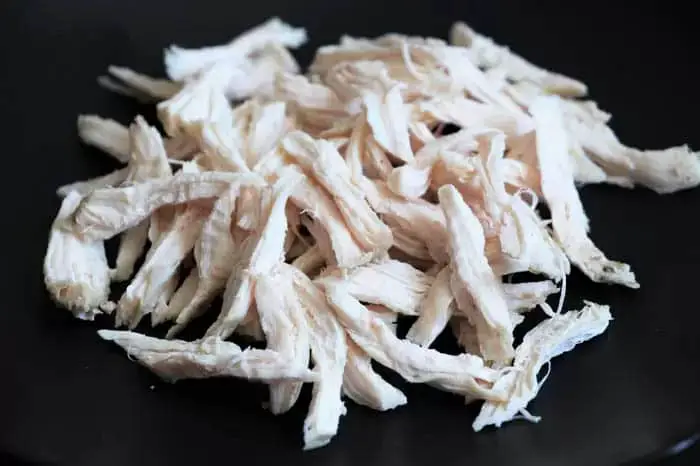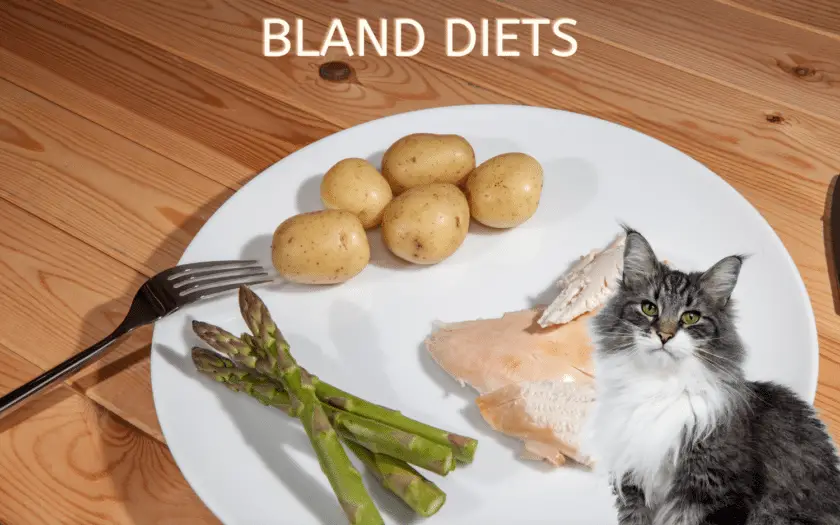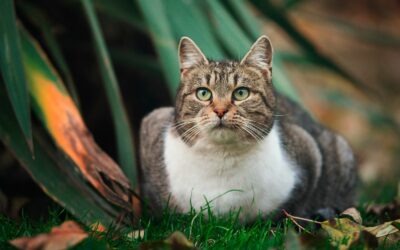While reading about feline nutrition, you may have heard about bland diets before. In this article, we will explain what a bland diet is and why it can be very useful in certain situations.
Plain or bland diets usually consist of easily digestible foods with a very soft texture. This type of diet is generally low in fat and fiber, and it often contains a single source of carbohydrates and a single source of lean protein.
Why use a bland diet for cats?
The properties of bland diets make them easy for the stomach and bowels to digest. When your cat has an upset tummy (or more serious gastrointestinal issues), this diet can potentially help in two distinct ways:
1. It gives the stomach time to recover
Certain meats and other protein-rich foods require a lot of time and energy for the body to fully digest. In case of certain gastrointestinal issues, a diet full of soft and easily digestible foods may be just what the stomach and intestines need in order to recover.
2. Provides relief from pain
When animals have an upset stomach, they may vomit and experience stomach pain and diarrhea. This is where bland diets can really prove helpful: since they are so easily digestible, they can provide some much-needed relief. The low fiber content helps slow the production of stool, but it may also help prevent acid production, reflux, and further irritations to the stomach.

What ingredients to include in a bland diets for cats
If you decide to put your cat on this type of diet, you may want to know what these types of meals could look like. Bland diets come in two varieties:
- homemade meals
- prescription bland diets
Homemade
“While still good as a temporary solution, vets have been moving away from them in recent years,” says Joanna Woodnutt (BVM): “Home-cooked bland diets are an emergency stop-gap that lack certain vitamins and minerals. Prescription GI diets are the better choice.”
If you don’t have access to prescription GI’s, there are certain guidelines. According to Springmillsvet’s diet instructions, the best non-prescription bland diet consists of rice with plain chicken or turkey. It’s best to use either chopped & boiled chicken, chicken broth, or turkey for meat. You may also find that a can of smooth baby food containing these kinds of meat may work. Other commonly used foods are boiled greens including beans, carrots, peas, and corn.


Prescription bland diets
Prescribed GI’s have a few advantages over home-cooked meals. Not only are they nutritionally complete and pre-prepared, but they also often include prebiotics & probiotics to help an upset stomach. Here’s what Jessica from Nutrition RVN has to say on the topic:
“This chicken and rice-diet recommendation is the age-old adage that is a huge no-no and I beg you to stop doing it! (..) To improve gut health, we need to maintain that colony of healthy microbes long term to keep the balance of good and bad bacteria just right by continuing to provide prebiotic fibre.”
It doesn’t have to taste bad
Although the name may suggest otherwise, bland diets can actually be quite tasty. It all depends on the ingredients and the way they are prepared. For example, boiled chicken is something most cats will find delicious, even without any additional herbs.
Tip: You might be tempted to add some spice as a way of making a simple dish more interesting, but those may irritate the bowels even further! Keep a bland diet as simple as possible for best results.
How long should your cat stay on a plain diet?
As we mentioned earlier, plain foods don’t contain a whole lot of fiber or fat (and sometimes little protein). Since these nutrients are absolutely essential to a healthy functioning body, you can not put your cat on a bland diet for extended periods (and certainly not forever). Imagine how your own body would respond to only eating rice pudding for months.
A few days should be enough time to reduce vomiting and diarrhea and to allow the stomach to recover. After this period, it is advised to gradually introduce the original diet so that your cat can get all her essential micro and macro-nutrients again.
Once your cat is off the bland diet, do check if any symptoms reappear. If they do, that might be a good time to consult a veterinarian.





